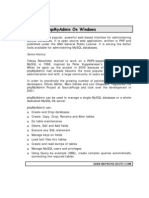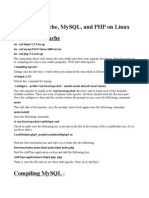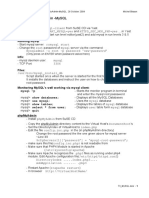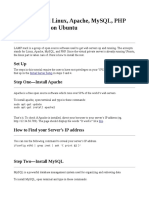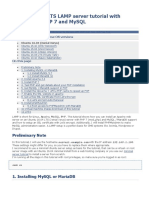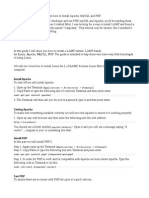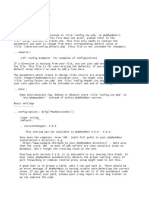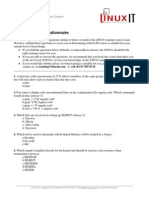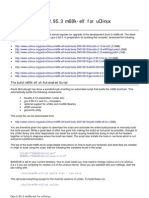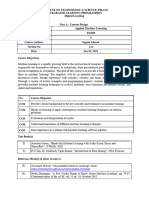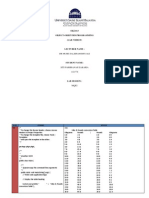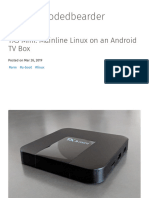0% found this document useful (0 votes)
102 views6 pagesInstphpmyadminlinux
phpMyAdmin is a popular open source web application written in PHP for administering MySQL databases. It was started in 1998 and has grown significantly since. To install it on Linux, download phpMyAdmin and extract the files to the Apache htdocs folder. Configure the config.inc.php file with database login details and enable the mbstring PHP module. Reload phpMyAdmin in the browser to access the administration interface.
Uploaded by
api-3730515Copyright
© Attribution Non-Commercial (BY-NC)
We take content rights seriously. If you suspect this is your content, claim it here.
Available Formats
Download as PDF, TXT or read online on Scribd
0% found this document useful (0 votes)
102 views6 pagesInstphpmyadminlinux
phpMyAdmin is a popular open source web application written in PHP for administering MySQL databases. It was started in 1998 and has grown significantly since. To install it on Linux, download phpMyAdmin and extract the files to the Apache htdocs folder. Configure the config.inc.php file with database login details and enable the mbstring PHP module. Reload phpMyAdmin in the browser to access the administration interface.
Uploaded by
api-3730515Copyright
© Attribution Non-Commercial (BY-NC)
We take content rights seriously. If you suspect this is your content, claim it here.
Available Formats
Download as PDF, TXT or read online on Scribd
/ 6
